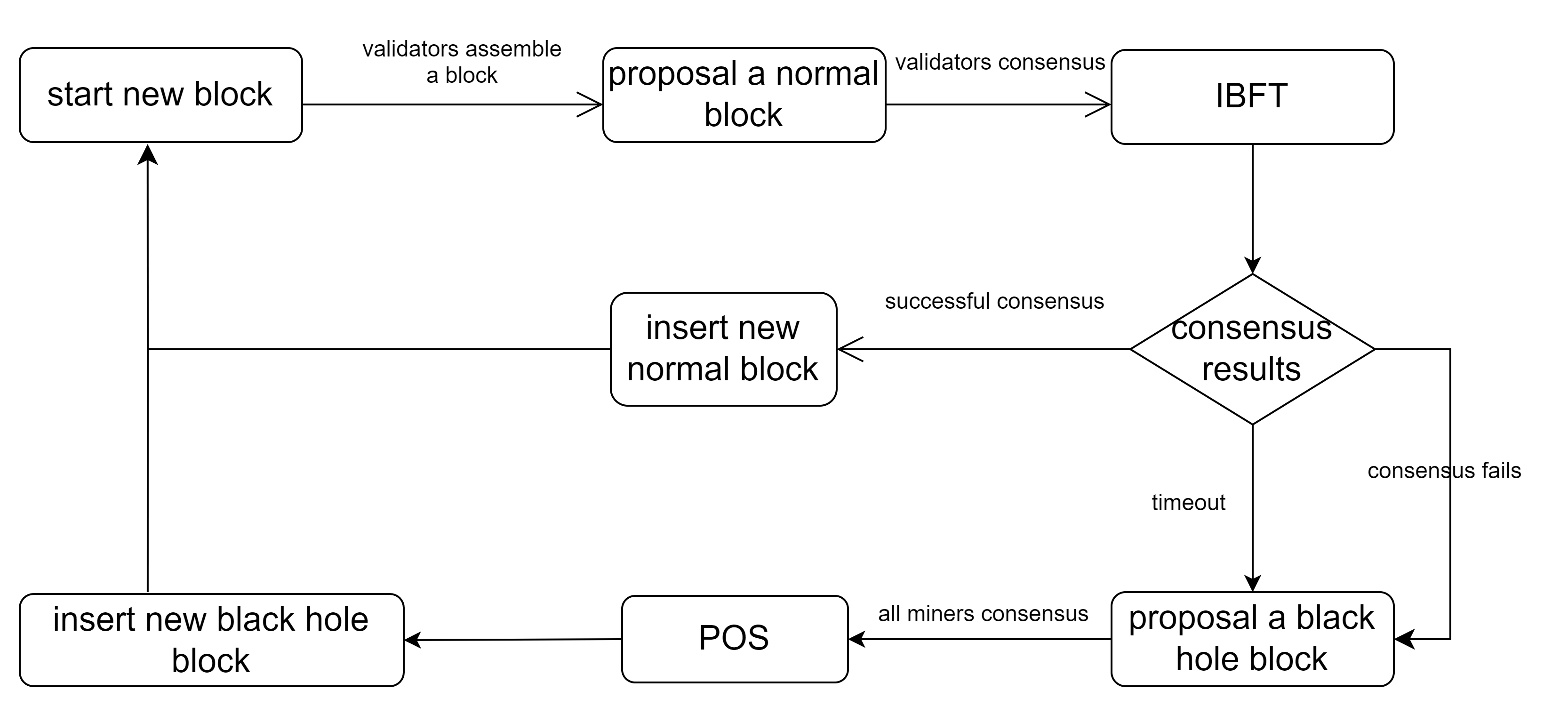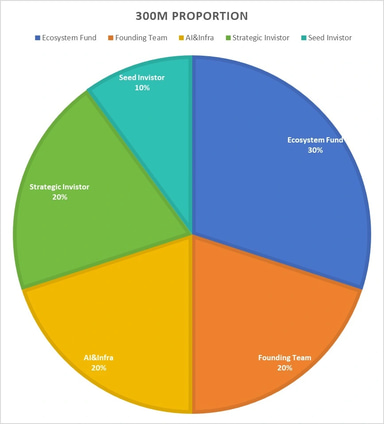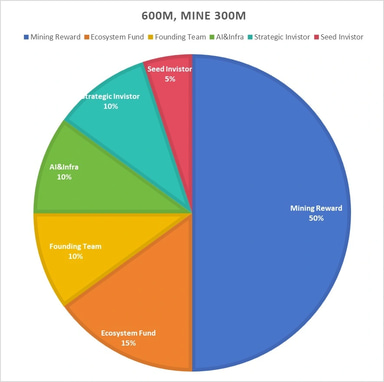Read
Edit
History
Notify
Share
ErbieChain
ErbieChain is a blockchain platform integrating advanced consensus mechanisms and support for non-transferable tokens like ChainLayer SBT (CSBT). It emphasizes efficiency, scalability, and security, offering solutions for decentralized applications and data management. The platform incorporates unique features, such as blackhole blocks and assetized web data, to address challenges in modern blockchain networks. [1]
Overview
Erbie is a Layer 1 public blockchain that uses the DRE consensus algorithm, designed for low energy consumption, high concurrency, and compatibility with the Ethereum Virtual Machine. It builds on Ethereum's capabilities by incorporating ChainLayer SBT to support the aggregation and assetization of Web data, aiming to create a decentralized, application-oriented network. The blockchain employs the Dynamic Random Election (DRE) consensus mechanism, a Byzantine fault-tolerant protocol suitable for asynchronous environments with security resistant to quantum threats. Its multi-layer architecture, consisting of transport, blockchain, API, and application layers, ensures network security and efficiency. Block rewards in Erbie include ERB, the native cryptocurrency, and CSBT, a chain-layer non-fungible token. ERB is used for gas fees, storage fees, and collateral, while CSBT acts as a mapping medium for web data, enhancing security and reducing costs. [2]
Features
Dynamic Random Election (DRE)
ErbieChain's consensus mechanism combines the Dynamic Random Election (DRE) algorithm and Byzantine Fault Tolerance (BFT) for block validation. The BFT algorithm reaches a consensus on ordinary blocks, while the DRE algorithm selects the validators participating in BFT. To address situations where an excess of malicious validators disrupts the production of ordinary blocks, ErbieChain introduces "blackhole blocks" and employs the Weighted Proof of Stake (WPoS) consensus algorithm to validate them.
The DRE algorithm accommodates the openness of public blockchains, where numerous nodes and miners participate. Since the BFT algorithm cannot manage many nodes, the DRE algorithm elects a limited number of miners to ensure efficient consensus. It uses a "drop point," a spatial coordinate generated by random seeds from the validator and staker lists, to select 11 validators for ordinary block consensus.
Validators are influenced by "online weight," which measures their activity ratio. This weight has a maximum value of 70 and decreases by 20 each time a miner fails to produce a block, while successful block production restores it to 70. When a new block is generated, a drop point is calculated using the perimeter chain algorithm, and validators are selected based on their proximity to this point. The distance between a miner and the drop point is determined by factors such as pledging amount and online weight, minimizing the selection of offline nodes. [3]
Weighted Proof of Stake (WPoS)
WPoS, a variant of Proof of Stake (PoS) adapted for ErbieChain, is used to validate blackhole blocks. The amount of staked tokens also incorporates "online weight," influencing a miner's stake. Nodes that go offline experience a reduction in their online weight, diminishing their impact on the network while being online restores their weight and influence. [4]
Network Layer
ErbieChain is a peer-to-peer network of thousands of nodes communicating through standardized protocols. The network layer provides the protocol stack, enabling nodes to locate each other and exchange messages, which can be broadcast messages for one-to-many communication or direct exchanges between specific nodes. Nodes must adhere to network rules, including maintaining accurate records of network topology and online nodes, verifying message authenticity using sender signatures, and ensuring broadcast messages are propagated across the network. [5]
Blackhole Block Message Protocol
The blackhole block message protocol in ErbieChain manages the consensus process during blackhole block creation. Using the staking list, miners are selected in sequence every five seconds to generate voting messages distributed across the network. If the proposer’s voting weight exceeds 50% of the total network weight, they attempt to produce a blackhole block. Voting continues in sequential rounds until consensus is reached and a block is successfully created. [6]

Gossip
The Gossip protocol in ErbieChain facilitates the exchange of information among nodes, ensuring consistent data across the network. Used for broadcasting blocks, proofs, authentication, exits, and forfeitures, the protocol operates within a defined payload limit based on local metadata. Gossip, modeled after epidemic spread, supports distributed systems by effectively disseminating data.
There are three data transmission modes: Push, Pull, and Push-Pull. In Push mode, a node sends updated data to another, incorporating newer information. Pull mode involves a node requesting updated data from another and sending the relevant updates. Push-Pull combines these methods, allowing nodes to exchange updates bidirectionally and enhancing efficiency. Gossip protocols include dissemination, anti-entropy for data repair, and those computing system-wide aggregates. [7]
ERB
ERB functions as the primary cryptocurrency on the Erbie blockchain, facilitating payments for on-chain gas, storage, and CSBT protocol invocation fees. It also serves as collateral for validators and stakers. A significant portion of ERB issued through inflation is allocated to stakeholders based on their staked holdings. The inflation schedule aims to ensure balanced staking yields for both token holders and validation service providers, who earn commissions from staking yields.
The percentage of ERB influences the staking yield relative to the total supply, making the distribution and delegation of tokens across validators critical in setting initial inflation parameters. As network usage is expected to grow over time, the inflation rate is designed to decrease, aligning with the anticipated increase in on-chain activity. [8]
Tokenomics
ERB has a total supply of 600M and has the following allocation: [8]
- Mining Reward: 50%- Ecosystem Fund: 15%- Founding Team: 10%- AI & Infra: 10%- Strategic Investor: 10%- Seed Investor: 5%
Chainlayer SBT (CBST)
CSBT (ChainLayer SBT) is a non-transferable blockchain token mined at the chain layer of the Erbie chain. Retaining the characteristics of traditional Soulbound Tokens (SBTs), it introduces enhanced security and lower invocation costs through the Erbie chain's technological infrastructure. Once allocated, CSBT cannot be transferred, ensuring its role as a unique identifier and proof of achievement. It is mined with every block on the Erbie chain, making it integral to the blockchain ecosystem.
CSBT offers advanced security features, safeguarding against malicious attacks and data tampering. The Erbie chain’s optimized design significantly reduces usage costs. Additionally, it facilitates the mapping and assetization of web data, expanding its functionality beyond identity verification and proof of achievement. This integration positions CSBT as a key element in identity management, community governance, and data utilization within decentralized networks. [9]
Assetization
CSBT enables the assetization of web data, transforming it from simple information into valuable, tradable assets on the blockchain. This integration records data ownership and usage rights with immutability and high security, ensuring data is mapped to its owner. Through CSBT, data can be traded on decentralized markets, creating new opportunities for income through the sale or lease of data assets.
The process enhances data security and transparency, as all transactions and usage records are permanently stored on the blockchain, preventing tampering or fraud. It also reduces data management costs by making storage, transmission, and management more efficient and economical. Data owners can earn revenue through a decentralized platform by allowing their CSBT to be invoked, with earnings distributed automatically via smart contracts. This approach improves data utilization and contributes to developing a decentralized data economy. [10]
Partnerships
- Mandra Capital
- Liquid 2 Ventures
- LIMINO
- LinkLayerAI
- E/M Group
- StraitS
- CodeX
- Reflection
- MANA3
- AIA:A
- Gameta
- Edge Matrix Chain (EMC)
- Bankcoin
- INTO
- Bit Rivals
- AllSpark
- Cheersland
- Terminus
- I AGI Open Network
- Collably
ErbieChain
Feedback
Did you find this article interesting?
Twitter Timeline
Loading
Media



REFERENCES
[1]
[2]
[3]
[4]
[5]
[6]
[7]
[8]
[9]
[10]
